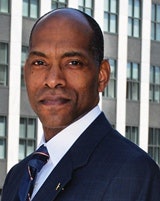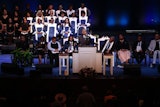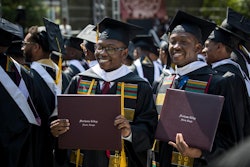 Dr. Norman Fortenberry
Dr. Norman FortenberryFrom his parents’ telling, Dr. Norman Fortenberry indicated he wanted to pursue engineering as his career by age 3. By all accounts, his plans worked out—he graduated from MIT with three degrees in mechanical engineering and is now the executive director of the American Society for Engineering Education (ASEE). ASEE is a nonprofit organization based in Washington, D.C., with thousands of members in the United States and abroad. Since its founding in 1893, ASEE’s goal has been to promote and improve engineering education, which continues to evolve as the field advances.
Prior to ASEE, Fortenberry worked at the National Academy of Engineering and the National Science Foundation, as well as the National Consortium for Graduate Degrees for Minorities in Engineering in Science.
Despite the startling advancements in technology and engineering that have occurred over the past century, there is one area in which engineering continues to falter: too few minorities and women enter and persist in the engineering field.
Yet, over the course of the next several decades, the U.S. population will become “majority minority.” The Census Bureau projects that, by 2044, Whites will make up 49.7 percent of the population. A preview of this future will be available at the start of the school year this fall. According to Department of Education projections, public K-12 schools will be majority-minority.
For the future of engineering in the United States, this may have interesting implications. Certain minority groups—Hispanics, African-Americans and Native Americans—are highly underrepresented in engineering fields. The National Action Council for Minorities in Engineering (NACME) watches trends in this area, and its research shows that the numbers have not significantly improved, at least since 2012.
Fortenberry knows firsthand that being a minority studying engineering can be a somewhat lonely endeavor. At MIT, he became aware of race in a new way.
At the two high schools in Missouri and Louisiana that he attended prior to college, he had Black and White friends without ever thinking too much of it. But upon arriving at MIT, he found himself grouped in with the other Black students there. “I don’t recall making that a conscious choice,” he says.
MIT was then in the midst of making a concerted effort to recruit more minority students. Fortenberry estimates that there were about 80 Black students in his class and 300 to 400 total in the Black Student Union, which he was active in. The numbers have not changed much—as of fall 2014, 344 Black students total were enrolled at MIT, according to the Office of the Provost.
What has changed are the recruitment tactics. Fortenberry says that, in the 1970s and ’80s, it was understood that not all the minority students were prepared for the academic rigor of the school and might not make it through. “Over time, they got better about identifying, ‘OK, we need to at least pay attention to who at least has the potential and help them become qualified,’” Fortenberry says.
For two years during his time at NSF directing undergraduate programs, Fortenberry oversaw grant programs that were designed to improve academic infrastructure at historically Black colleges and universities and tribal colleges and universities, in addition to programs seeking to enhance participation in science and engineering by women, underrepresented minorities and persons with disabilities.
One of the more significant challenges in that regard, Fortenberry says, was grant duration.
Most grants lasted three to five years, roughly equivalent to the academic lifetime of a student.
As it so happens, ASEE is in the midst of its 2014-15 Year of Action on Diversity.
“We wanted to move beyond dialogue and actually have some action,” Fortenberry says.
The goal of the Year of Action is to ensure that ASEE members have the tools they need “to actively change the engineering climate,” as the ASEE website states.
While minority participation is a key point of the Year of Action, ASEE is also focusing its efforts on helping engineering educators create more welcoming spaces for LGBTQI students and colleagues. At ASEE’s annual meeting, the organization held a number of workshops on the subject. Fortenberry says that ASEE has always been committed to diversity.
“I have very little doubt that there is any organization that is on record as being as welcoming as ASEE is,” Fortenberry says, “which is an impressive statement for an engineering organization because engineers, dealing in generalities, tend to be a conservative bunch.”


















